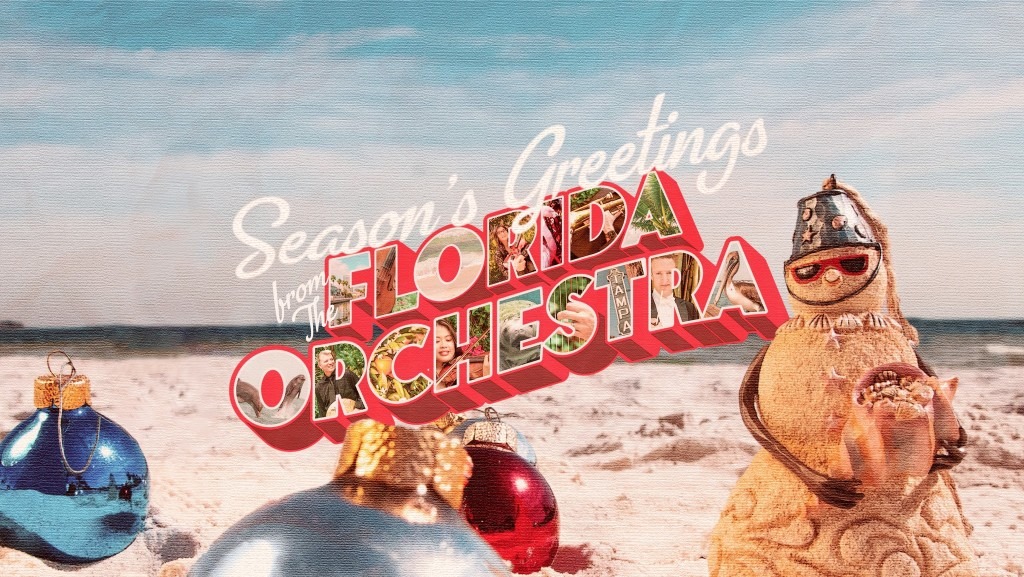for another Messiah
December 8 & 9
Tampa and St Pete
Details here
Could any single piece of music be more popular and performed than Handel’s Messiah?
Yes, Beethoven’s Fifth Symphony and Pachelbel’s Canon take in some pretty good numbers, but it’s hard to avoid this grand oratorio as part of our annual holiday tradition, including two performances this weekend by The Florida Orchestra and Master Chorale of Tampa Bay.
Like Tchaikovsky’s Nutcracker, Handel’s matchless wonder is a cash cow for arts organizations, a challenge for performers, and much-loved by listeners. But what makes this 282-year-old work so popular?
For one thing, Handel knew how to write a good tune, and Messiah has gobs of them. But more than melodies, it reflects something much deeper, says TFO Music Director Michael Francis.
“For me, it’s the great and complex story of the most significant book of all time, the most influential story of all time,’’ he says. “The subject matter is huge.’’
Some might argue that we hear too much Messiah and its ubiquitous Hallelujah chorus. Francis says it’s a mindset.
“It’s important to keep coming back to great works of art because we look at them at different angles as we change, as we get older,’’ he explains. “For that reason, it’s become a deep part of our tradition.
“It gives structure to the narrative of our life, and I find certain movements become more moving and encouraging as time passes. Aside from that, it’s a sensationally beautiful piece of music.’’
Messiah is an oratorio, a large-scale work based on sacred text, but without sets, costumes or action. Drawing from the Old and New Testaments, Handel designed it in three sweeping sections – Prophecy and Fulfillment, Suffering, and Redemption. Although religious, its message remains universal, and Handel intended it for the concert hall, not the church.
Its theatricality is another reason for its popularity.
Handel also wrote Messiah in English, rather than German or Italian, which appealed to the middle class in England and Ireland, where the work first appeared back in the mid-1700s. This also made it easy to digest in the United States, and choral societies quickly got on the Messiah bandwagon.
Musically, the score is a hodgepodge of styles, including Italian (recitative), French (overture), English (anthem), and German (fugal) influences. Handel was, after all, a man of the world.
He also poured his soul into composing Messiah at a difficult period in his life. Several of his Italian operas at the time had been duds, costing him enough to nearly be thrown into debtor’s prison.
So he did what any good composer would do – he locked himself in a room and pouted awhile, then began writing in a burst of white-hot inspiration. Trance-like, he finished the score in a remarkable 24 days, going for long periods without food or sleep.
After completing the Hallelujah chorus, Handel wrote that he “saw heaven before me and the great God himself.” Evidence of this inspiration can be seen on the facsimile of the original score at the British Library – notes become increasingly large and spaced apart, as if written in a fury.
The full score is a handful, to say the least. It includes 53 sections spanning 2-1/2 hours. Many productions cut it down, but keep the favorites, such as Comfort Ye My People, For Unto Us A Child Is Born and the Hallelujah chorus.
There are so many favorites, in fact, that editing the work is more challenging than performing it in full.
This brings us to the business of standing during that famous Hallelujah chorus, a tradition said to have begun in 1743, when King George II rose from his seat, enthralled by the beauty of the music. Not wanting to offend the king, the audience also stood – or so the story goes.
Scholars are divided on this tale, and some say it’s a myth. But if people want to stand up and sing together, that’s a good thing – and Handel no doubt would give his nod of approval.
Handel’s Messiah
Friday, December 8 at 8 pm
Straz Center for the Performing Arts
1010 N. MacInnes Place, Tampa
and
Saturday, December 9 at 8 pm
Mahaffey Theater
400 1st St. S., St. Petersburg
floridaorchestra.org
Originally published in the Florida Orchestra Blog




